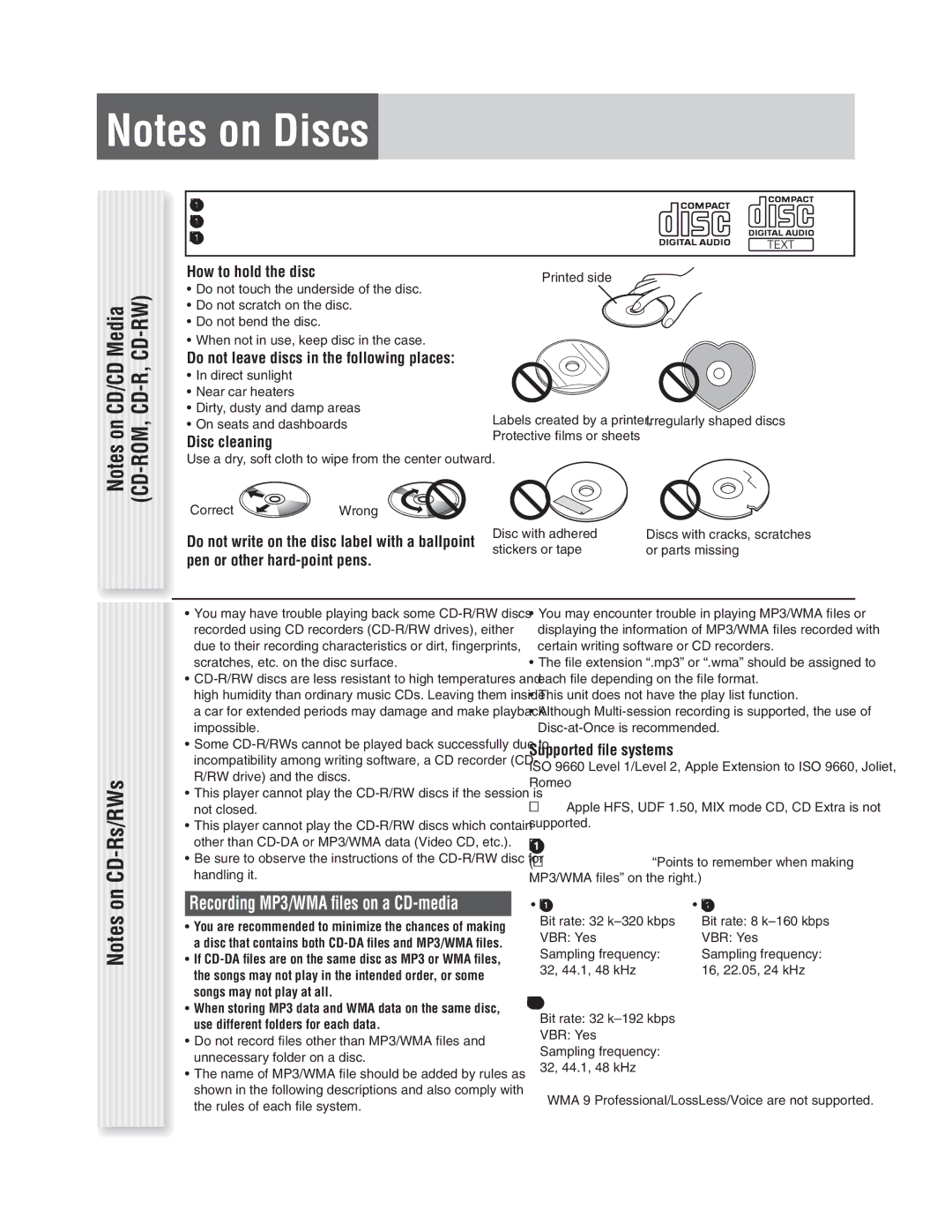CQ-C1305L, CQ-C1335L specifications
The Panasonic CQ-C1335L and CQ-C1305L are two remarkable car audio systems that embody a blend of advanced technology, stylish design, and user-friendly features. Known for their high-quality sound output and versatile functionalities, these units are designed to enhance any driving experience.One of the main features of the CQ-C1335L and CQ-C1305L is their integrated CD player, allowing users to enjoy their favorite music on the go. The CQ-C1335L also supports MP3 and WMA formats, enabling drivers to play a variety of digital music files without compromising sound quality. Both models come with a built-in radio tuner that fully supports AM and FM bands, ensuring a wide selection of stations for diverse listening preferences.
Another highlight of these models is the inclusion of a 4 x 50 watts maximum power output, which translates to a rich and powerful audio experience. The built-in equalizer allows users to customize their sound preferences with ease, delivering clarity and depth in audio playback. The adjustable sound settings enable the choice of various sound modes, catering to different music genres and personal tastes.
In terms of connectivity, the CQ-C1335L offers a front auxiliary input, providing additional options for connecting portable media devices like smartphones and MP3 players. This feature is particularly beneficial for those who prefer streaming music directly from their devices. The CQ-C1305L, while slightly more limited in features, retains essential connectivity options, making it a solid choice for users seeking reliable performance without excessive complexity.
Both models are designed with an intuitive layout, ensuring easy navigation through menus while driving. The bright LCD display is easy to read under various lighting conditions, enhancing usability and safety. Furthermore, their sleek designs allow for seamless integration into most car interiors, making them visually appealing additions to any vehicle.
In summary, the Panasonic CQ-C1335L and CQ-C1305L are exemplary car audio systems that offer a mix of user-friendly features, excellent sound quality, and modern connectivity options. With their robust performance and innovative technology, these models cater to audiophiles and casual listeners alike, making them a valuable upgrade for anyone looking to enhance their in-car audio experience.

